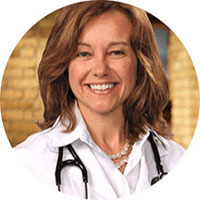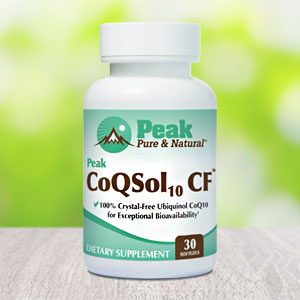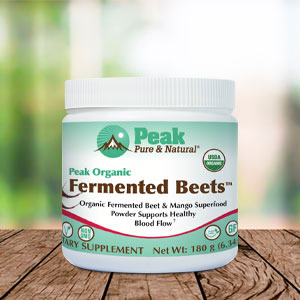Get Easy Health Digest™ in your inbox and don’t miss a thing when you subscribe today. Plus, get the free bonus report, Mother Nature’s Tips, Tricks and Remedies for Cholesterol, Blood Pressure & Blood Sugar as my way of saying welcome to the community!
5 scary heart health facts that could haunt you

Heart disease is not always top of mind. Maybe because we’ve become almost numb to it. Heart disease remains the leading cause of death worldwide, and that makes it almost seem “normal.”
Even though it’s far from it! 80% of heart disease need not exist. That’s not a wish. It’s a fact.
And unless you’re diligent, you might be missing an opportunity to avoid it.
Here are some key facts you need to know:
1. High cholesterol and high blood pressure have no symptoms
Two of the leading preventable causes of heart disease can be present inside your body without you realizing it. Even though both conditions affect nearly half of all US adults, neither high cholesterol nor high blood pressure are associated with obvious physical signs or symptoms. So unless you have them checked, you can’t know if you’re in the clear.
How often should you have these evaluated? My rule of thumb is that cholesterol levels should be checked once in your teens, twice in your twenties, three times in your 30s, four times in your 40s, five times in your 50s, and yearly there after. More frequent checks are required if abnormal readings are noted at any point along the way. Blood pressure should be checked at EVERY healthcare encounter and AT LEAST as frequently as cholesterol.
2. Hidden risks are common
Even when you get your cholesterol checked, you may have incomplete information about your true risk. Apo B and Lipoprotein A are tests worth having — although few physicians are aware of these tests and actually order them.
Lipoprotein A is a genetically determined risk factor that can only be uncovered with a blood test. It affects about 1 in 5 Americans. And if you don’t test for it, you won’t know if you’re at increased risk of developing plaque buildup prematurely. You need this tested only once in your lifetime.
Apo B helps determine how confident we are that your LDL reading is a true representation of risk. Apo B can change with lifestyle adjustment. Timing and appropriateness of Apo B testing is something that your doctor should weigh in on. Apo B and Lipoprotein A (Lp(a)) are both assessed with blood tests that are not expensive and are typically covered by insurance (but always good to check with your specific plan).
3. Heart disease is not just a concern for older adults
Traditionally, heart disease has been viewed as an illness affecting primarily older adults.
However, as outlined in a recent blog, heart disease begins in childhood. And when we exercise less because we’re glued to screens, and when we’re surrounded by foods that fuel high cholesterol, high blood sugar and high blood pressure, it might not be surprising that heart attacks among adults under 40 have become increasingly common.
Regardless of age, the time to start preventing heart disease is today.
4. Heart disease is the #1 killer of women — and many don’t know it
Many people still think of heart disease as primarily a “men’s issue,” but it’s actually the leading cause of death for women as well. In fact, heart disease kills more women each year than all cancers combined (including breast cancer).
Women are also less likely to experience the classic signs of a heart attack, such as chest pain, which can delay diagnosis and treatment. Symptoms in women can be subtler and may include fatigue, nausea, or shortness of breath. Although many women experience fatigue (Hello! We’re juggling multiple roles!) and both nausea and shortness of breath have many causes, if you have risk factors for heart disease (see #1 and #2), you should take your symptoms seriously — especially if they are new or unexpected.
5. Food drives most of it
Globally, heart disease remains the top cause of death. In the United States alone, someone dies from a heart-related condition every 33 seconds. This is roughly the equivalent of a September 11th-like tragedy repeating itself every 24 hours, 365 days a year.
This statistic underscores just how pervasive and serious heart disease is. But it’s not just about mortality rates — it’s also about the quality of life for millions of people who live with heart conditions. And, to reiterate the point I made at the beginning of this blog, 80% of this represents unnecessary suffering.
Five of the 7 modifiable risk factors for heart disease (high cholesterol, high blood pressure, high blood sugar/diabetes, excess weight, poor diet) are all due in part or in whole to dietary choices (quitting smoking and moving more are the other two modifiable risk factors). This means changing what you eat is the most impactful thing you can do yourself to avoid this disease.
Take charge of your heart health today
Step One Foods exists to help you make the dietary changes needed to impact your heart health destiny, with products that are not only easy to use but also unapologetically delicious. Our focus is on real food, backed by real science, for real results—because heart disease is not destiny. You have more control than you think and we’re here to help.
Editor’s note: There are perfectly safe and natural ways to decrease your risk of blood clots including the 25-cent vitamin, the nutrient that acts as a natural blood thinner and the powerful herb that helps clear plaque. To discover these and other secrets of long-lived hearts, click here for Hushed Up Natural Heart Cures and Common Misconceptions of Popular Heart Treatments!














